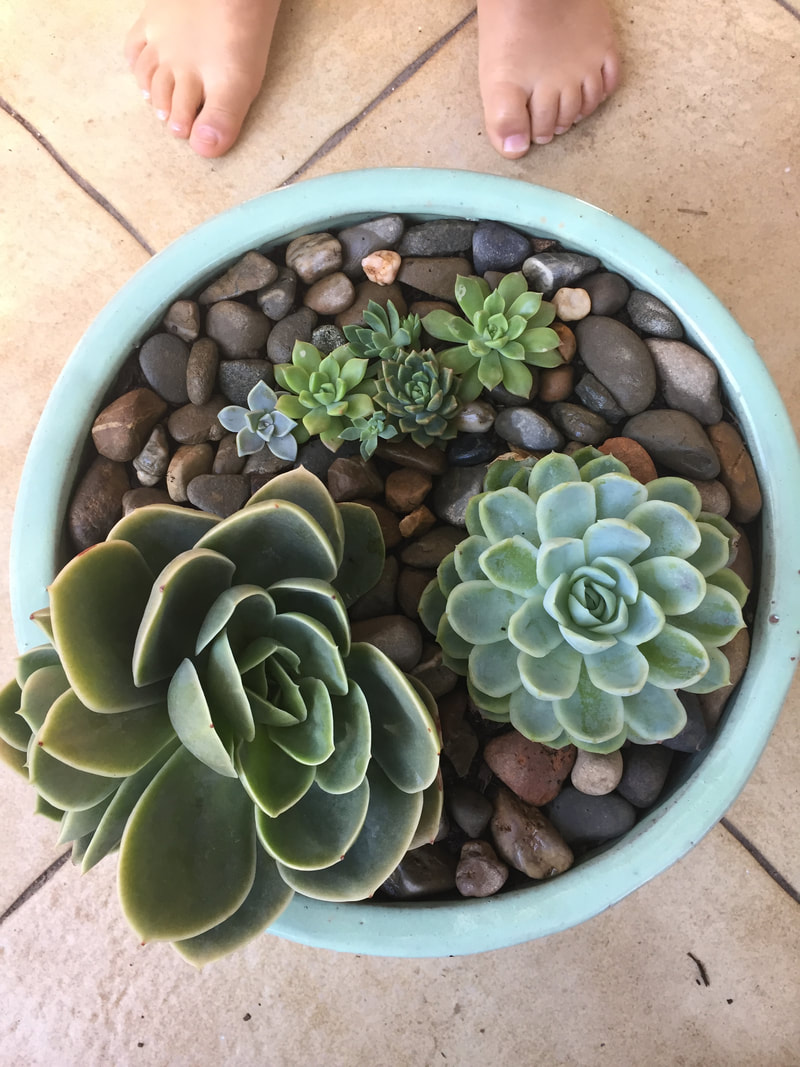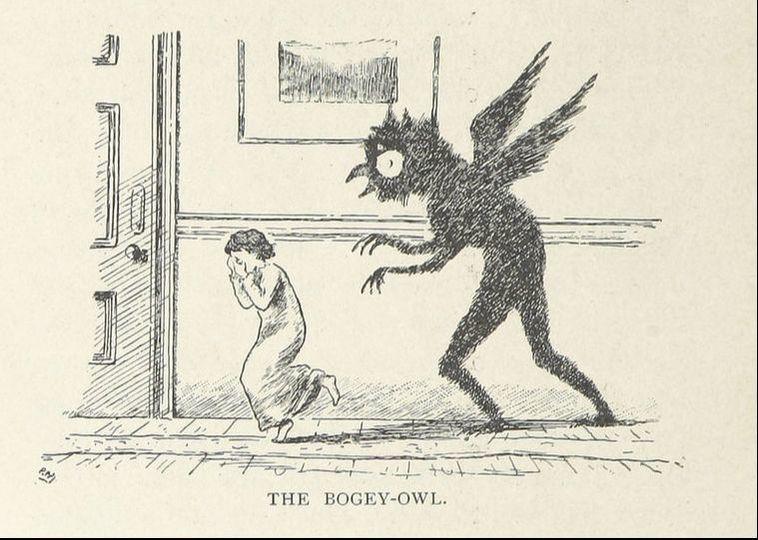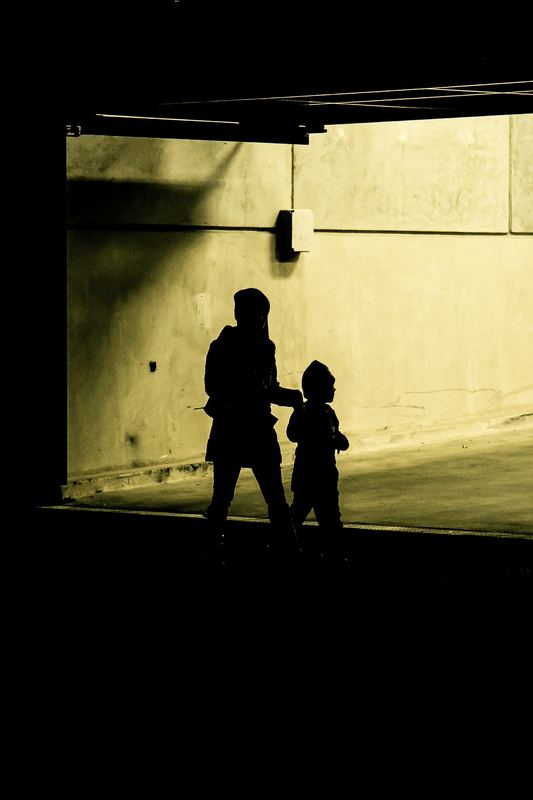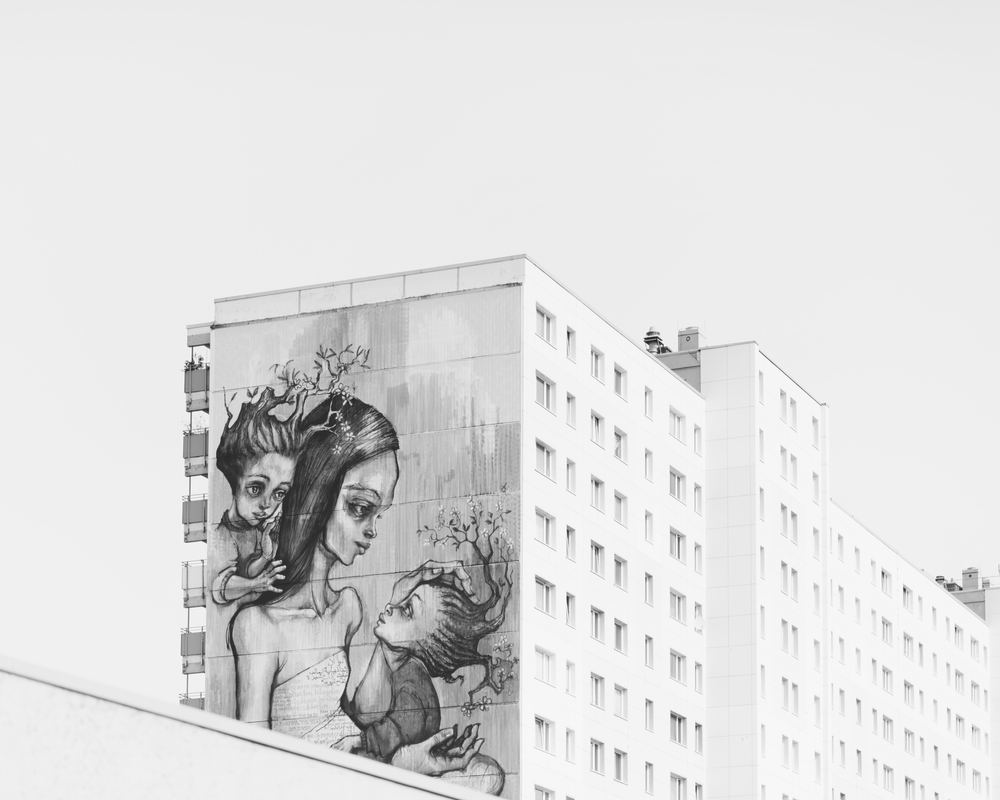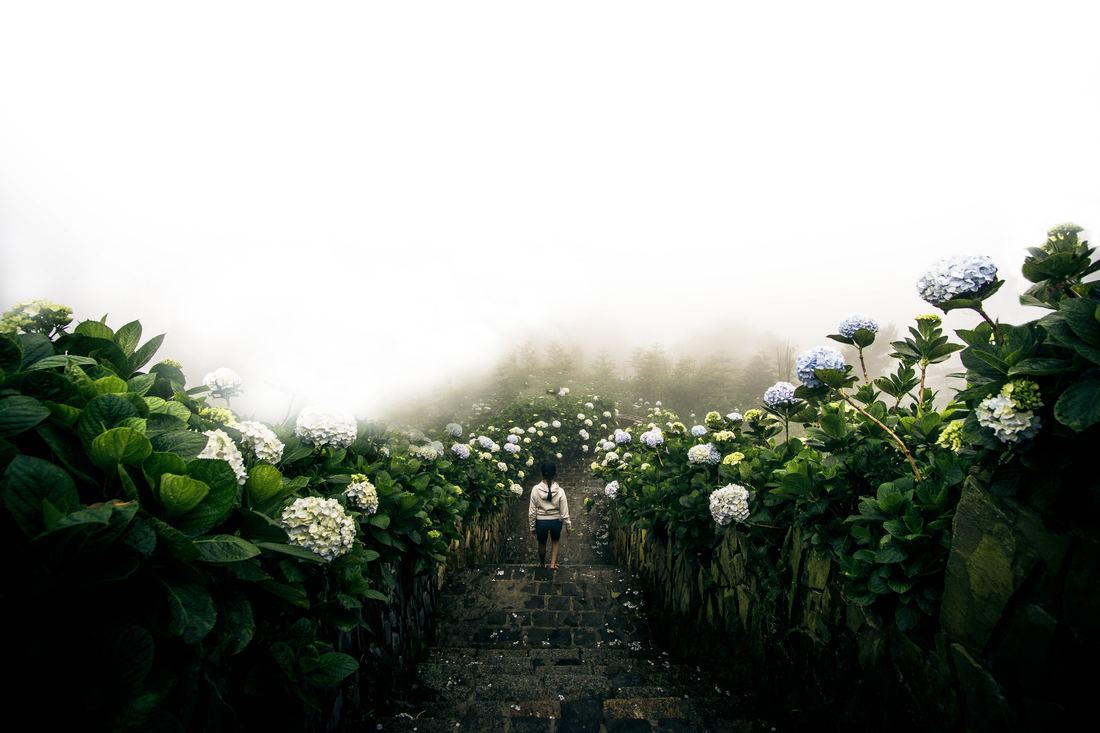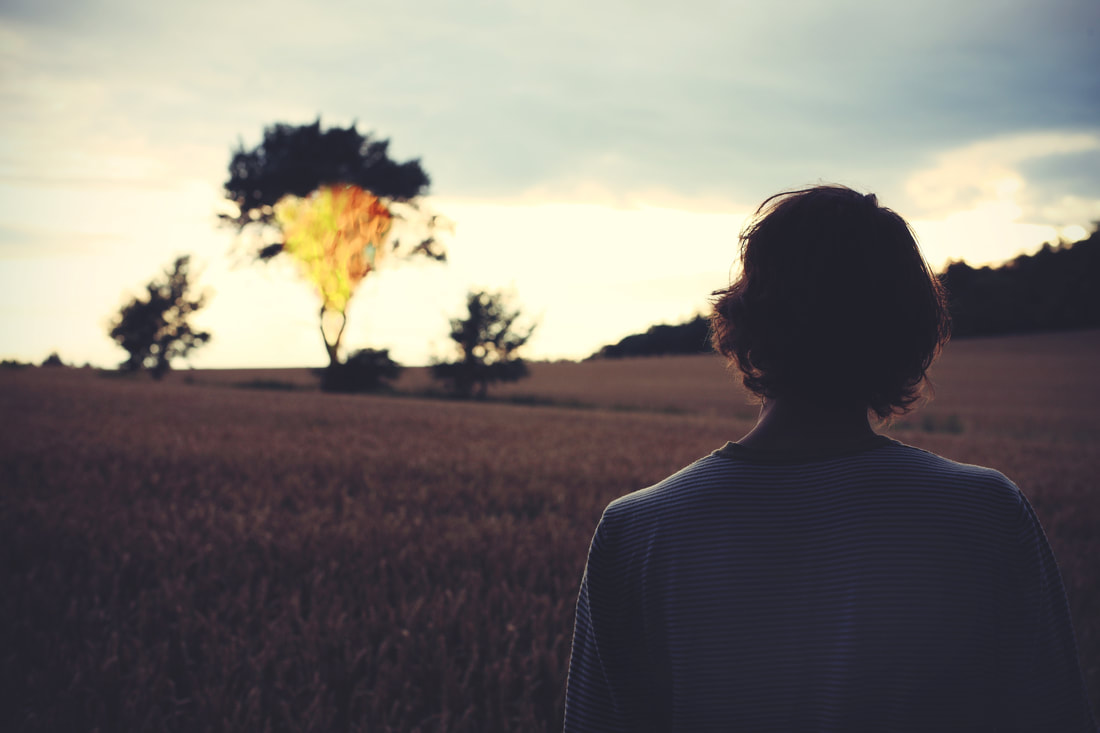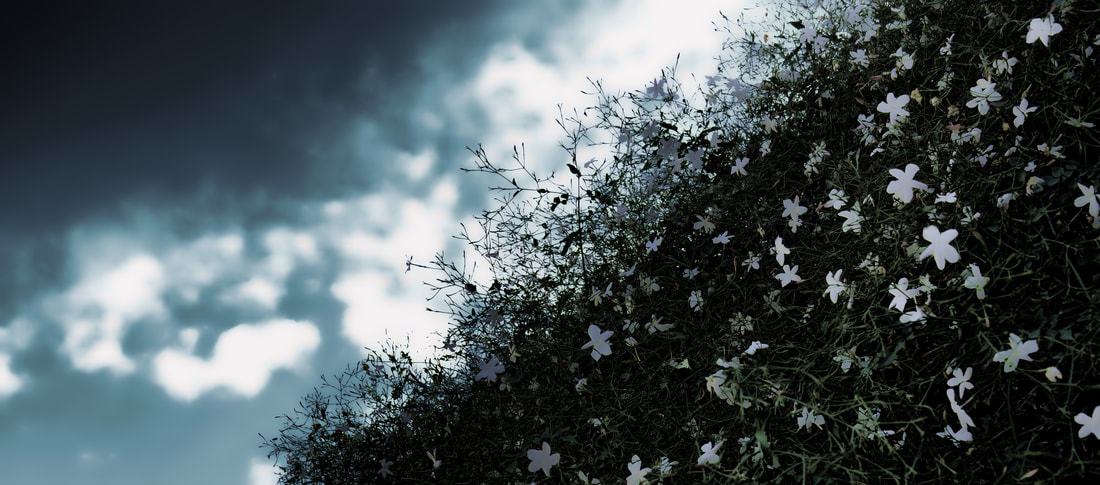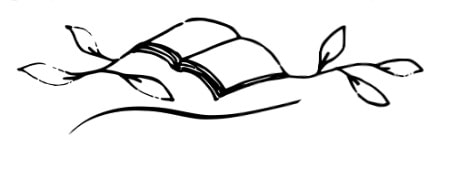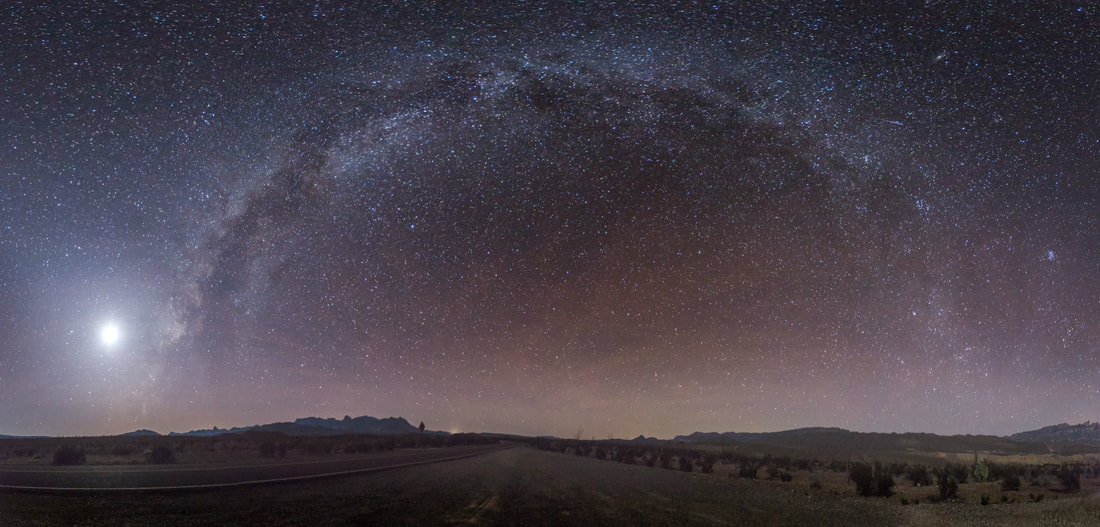WelcomeHi, I'm Laura. Archives
June 2018
Categories
All
Let's Connect |
Back to Blog
I was a monster last Halloween. My house was quiet and still. I’d just magically settled to sleep a small miserable child with a roaring fever. My hands, my time, were my own for the first time in 12 hours. I made hot tea and collapsed for a date with Netflix. Then I heard footsteps. Surely no! Once an orange balloon had arrived in our letterbox with a polite note inviting us to display it if happy for children to visit. As a Halloween Grinch, I binned that balloon. I hadn’t received another since. Then the doorbell rang and rang with a host of shouts,“TRICK OR TREAT! TRICK OR TREAT!” And any exhausted caregiver of a sick sleeping child will know exactly what beast I had morphed into by the time I wrenched that door open. I was not my best self that night. I have mixed feelings about Halloween. But I suspect there is a better way to exist within the space Halloween is carving into my community than as a closed door or house of horrors. This year I decided to give Halloween more thought. What is Halloween exactly? Well, there is no exactly. Halloween is a tree with a web of roots and branches. 2000 years ago the Celts lived in and around England. At the heart of Celtic spirituality was the rhythm of the seasons. When summer faded into the depths of winter, they believed the boundary blurred between the world of the living and the dead. Ghosts were thought to visit earth, yet also underworld creatures of destruction and chaos. To control the breach the Celts got busy celebrating ‘Samhain’. Different communities had their own Samhain traditions, but often they burnt sacrifices and gifts on bonfires to placate the wrath of these monsters and prevent them causing trouble. Scary costumes were worn to help scare the monsters back into containment. After 43 AD, the Romans swallowed the Celtic world. Some Roman celebrations of the dead merged into Samhain. After 300 AD, Christianity began to shift into the governing religion of the Roman Empire. In the 700s Pope Gregory III moved a feast day for dead saints, to the night before Samhain. This timed the feast with the harvest and layered a new Christian meaning onto the ancient tradition. ‘Halloween’ is ‘All Hallows Eve’—the eve of All Saints Day. Some Protestants later banned Halloween to spite the Catholics. In the 1800s Halloween arrived in America with Irish Catholics escaping the potato famine. It took on new shape as masked children terrorising the streets and proved perfect kindling for the flame of commercial capitalism. American consumers are expected to spend 9.1 billion on Halloween this year. The Washington Post suggests Australia did not readily adopt Halloween due to the conservative influence of Victorian England, a yoke revolutionary American had escaped. Today an avalanche of pumpkins, autumn leaves, gore, monsters, heroes, princesses, sexy vampires, and coloured sugar invades the US landscape across October. Halloween fever has overflowed into Australia and is taking root. Is Halloween intrinsically evil? Well, what is ‘intrinsic’ to Halloween? It has done so much shapeshifting. We are best to look at context, intent, and actuality. If your building is having a jolly dress-up party for the kids in the common area, I’d arrive with honey jumbles and make friends. If your book club invites you to a séance to contact the dead, I’d decline. Some Halloween survival suggestions-- 1. Go to the People. We are to go to the nations not hide away in Christian ghettos. Our lives will always exist amongst different spirituality and how to respond a juggle. Paul taught that meat sacrificed to idols wasn’t evil to eat as the idol was an empty, but if eating idol meat would appear as idol worship, don’t eat. Paul raged that circumcision was a sign that pointed away from grace, yet he circumcised Timothy to help him connect to the Jews. How to live for Jesus out in the big wide world isn’t always one cut fits all. If your community makes an event of Halloween that doesn’t burn your conscience or traumatise your children then it’s a chance to meet the locals. True community is hard to foster in our fast insular lives. An invitation is a gift. Even Jesus loved a party. Yet I cringe to hear houses in America can receive 1000+ treat seekers. I would hope to see Australian Halloween be about neighbourly friendship, not a massive candy grab. 2. Stay Weird* “Finally, brothers and sisters, whatever is true, whatever is noble, whatever is right, whatever is pure, whatever is lovely, whatever is admirable—if anything is excellent or praiseworthy—think about such things,” Paul taught. Halloween horror can be pushed to horrible extremes. To have houses, shops, and people all decorated with blood and gore can be traumatic to children and triggering to adults who have suffered violence. Also, to quote a friend, “I just can’t get past the fact that trick or treat is privileged kids (like my own) asking for more stuff that they don’t need. With an implied threat if the person they ask doesn’t hand over the goods. What kind of lesson is that?” Another friend is troubled by the excessive plastic waste. We should not be ashamed to set our own tone in any situation. No need to be rude or preachy, but do stay weird. Do be beautiful, lovely, wise, and generous. There are endless playful and creative ways to be God’s light this All Hallows Eve. Many of my friends spoke to me about doing exactly this. 3. Tell the truth. Tell your children the history. Children love a story. Discuss what you will and won’t do as a family. Kids love being in the know. Encourage engaged thinking. Yet stay the parent. Missing a bucket of lollies doesn’t damage a child. You could foster another family tradition. October is also the month to pack a box of treats for Operation Christmas Child. 4. No is a complete sentence. You don’t have to Halloween, whatever your reasons. You can keep your children home. You can leave a note on the door saying no thanks. You are free. 5. Remember the truth. When Halloween comes to town, let it trigger the truth. In Revelation the forces of evil mount for a war in horrific description. All looks set for a cataclysmic battle for earth. None happens. Jesus the lamb arrives. Jesus sweeps all opposition into the abyss and the new creation explodes like a field of cherry trees bursting full blossom. Monsters will not forever walk on earth. But the kingdom of light and love seeded by Jesus is unfolding now, will be completed when Jesus returns, and is eternal. I’ve no big plans for Wednesday. I’ve bought a bag of my favourite lollypops. If anyone dares visit I’ll put on my extrovert mask and be ready to meet some neighbours. And stuck for costume ideas for the street party? Don’t forget it’s also Reformation Day. Dress up little Lucy up as Martin Luther and peg a copy of the Ninety-Five Theses to the back of baby Henry. Think of all the juicy questions you’ll provoke. *I may have stolen ‘weird’ from Mike Frost’s new book ‘Keep Christianity Weird’, which I haven’t read but is on my list. I have just finished his ‘Surprise the Word! The Five Habits of Highly Missional People’, which was excellent, full with wonderful suggestions for how to do Kingdom living amongst everyday life. A big thank you to all the friends who shared with me their Halloween worries, delights, and traditions, encouraging me to think deeper about Halloween and making this blog post possible. I would love to hear how you do Halloween in the comments...
4 Comments
Read More
Back to Blog
Soggy Weetbix & Situational Awareness: How Teaching Body Safety to Children Teaches Them Consent.27/6/2018 CONTENT WARNING—this article contains discussions about child sexual abuse and violence against women by men. It may be distressing to some readers. Soggy Weetbix One morning one of my primary school aged sons politely requested to be excused a goodbye kiss. He said I still smelt of soggy Weetbix. This stung. It hurts to have affection refused and the allegation I was odorous was a lemon squeezed into this burn. What to do? He’s a sweet soul and children do love to please, so had I pouted and expressed my hurt he would have undoubtedly ‘consented’ to endure my pongy kiss in a near instant. But what does this teach? It would teach him that placating the emotions of others is more important that his body boundaries. So rather than manipulate his good nature why not cheekily flout his request? Why not tickle him to the ground and grinningly plant a smelly kiss on his cheek against his wishes? Harmless teasing and rumble is part of our family life. My son would likely laugh off my unwanted kiss as a cost of play. But what does this teach him? My ‘harmless’ rumble undermines his confidence to express his body boundaries and his expectation that the trusted adults in his life will respect them. “That’s okay, darling,” I said to my son. I kept my hurt and kisses contained. Gaslighting & Alarms Our children navigate a world where 30% of Australians experience sexual abuse within their childhoods.[1] They are most likely to be abused by a man, a man they know, a man they trust, a man they want to please, a man who can ‘playfully’ cross over their boundaries without triggering red-flags or alarm. While some perpetrators abuse with threats and violence, others slowly build and manipulate a close relationship with a child, grooming the child to be unable to identify, refuse, resist, or report abuse. Perpetrators also groom caregivers to gain access to children. ‘Gaslighting’ has become a buzzword in understanding domestic violence, used to describe a “form of emotional abuse that causes a victim to question their own feelings, instincts, and sanity, which gives the abusive partner a lot of power...Once the abusive partner has broken down the victim’s ability to trust their own perceptions, the victim is more likely to stay in the relationship.” [2] Many children who are abused are in effect gaslighted, taught by perpetrators to doubt their perceptions of safety, boundaries, comfort, and consent. Other perpetrators are not so fixated in their predatory, they may not even have a greater sexual attraction to children over adults yet will opportunistically abuse children for sexual gratification if a situation allows.[3] How do we raise children in a world of such men? Risk factors for abuse decrease when a child has an adequate understanding of appropriate and inappropriate sexual behaviour, personal safety, and can verbally or physically reject the abuse. [4] We must teach our children to know their bodies and body boundaries and fully expect them to be respected. We need to help set alarm bells in our children’s heads set to go off when their boundaries are crossed, alarm bells loud enough to change a trusted person into an unsafe person and affirm the child’s right and ability to seek safety. “STOP, I DON’T LIKE IT!” Deanne Carson, sexuality expert and co-founder of Body Safety Australia writes, “I teach consent education to children as young as three. A quick round of ‘heads, shoulders, knees and toes’ moves into a lesson on private body parts. Bottoms are hilarious and the word “bagina!” is readily offered with adorable three year old lisps. Kindergarten children know that their body belongs to them and they don’t have to kiss or hug if they don’t want to. They know who they can talk to if they are hurt, and when we practice saying, “STOP, I DON’T LIKE IT!” they raise the roof.”[5] Situational Awareness It is a horrible reality of parenting that we must build walls around our children to protect them from dangerous men and teach them to combat those who get past these walls. This terrifying truth resurfaced for me as Australia confronted the rape and murder of Eurydice Dixon and digested the message of the police, “Make sure you have situational awareness” “Be aware of your own personal security.” Australian women received one message loud and clear—they own the responsibility not to get raped and murdered. Women are sexually assaulted because they fail to make good decisions about travel, company, drink, dress, body safety and “situational awareness.” A responding shout echoed across the nation—No. Women are raped and murdered because of the men who choose to rape and murder them. How do we stop society breeding dangerous men? Please let this be the dominant conversation. I don’t ever want my children to think they own the responsibility not to get abused, but I will continue to teach them how to identify, guard against, and escape abuse in all ways possible. Yet I also call for more public attention, research, and action into stopping sexual abuse of children at the level of the perpetrator rather than rely on a little child to guard against a powerful adult’s physical force and gaslighting. As a woman I reject any responsibility for being on the receiving end of male violence, but given the world I live in my “situational awareness” will remain on high alert. But again we must confront the deeper question—how do we stop men becoming abusers? Eurydice Dixon’s murder is a horrific tip of an iceberg of male violence against women worldwide, violence which can’t be resolved by putting curfews on men as satire suggests, for while stranger rape gets our attention, women (like children) are most at risk of abuse behind closed doors by men they know and trust. Monsters & Men While Eurydice’s rape and murder took grip of our collective fear and grief, the recent news of the alleged murder of Qi Yu by her male flatmate went largely unnoticed. Why were we numb to Qi Yu’s fate? This terrible crime is the more common occurrence. In Australia police respond to a matter of domestic violence every two minutes and one woman a week is murdered by a current or former partner.[6] After the rape and murder of Jill Meagher shocked Australia in 2012, her husband Tom penned a biting cultural critique, ‘The danger of the monster myth’. Here he confronts how violence against women is perpetuated by "normal guys"— “By insulating myself with the intellectually evasive dismissal of violent men as psychotic or sociopathic aberrations, I self-comforted by avoiding the more terrifying concept that violent men are socialised by the ingrained sexism and entrenched masculinity that permeates everything from our daily interactions all the way up to our highest institutions.”[7] A Tipping Point? Propelled by the #MeToo movement and bolstered by mounting research into what causes many men to perpetrate abuse and violence, I pray for a national conversation that will actuate real change. Can this be a tipping point? We need to talk about male privilege and the embedded unconscious bias which leads women to be seen as having less worth than men and men to believe they have an inherent claim to women’s bodies.* As Carolyn Curtis James writes, “patriarchy turns man’s focus on himself—on his abilities and authority over others. His manhood is sustained by the submission and obedience of others.”[8] We need to correct the gender inequality in our society that enables this worldview. We need to ensure women have equal power, voice, resources, and opportunities. We need to confront the impact of prolific violent pornography on our spongy brains, young and old. We need to examine our current frameworks of masculinity. We need to love and guide our boys into good men. We need to remove weeds and rot from our culture. We need to replant, water, and nurture good seeds. Tenderness & Empathy Emma Pitman writes, “We urgently need to discuss the construction of masculinity in our society—in particular, the power that it promises and delivers to young boys and men who are desperate to feel powerful. Hegemonic masculinity, as it stands, encourages the need for dominance, and toxic masculinity satisfies this need by providing a series of cheap, destructive avenues by which to achieve it.”[9] Tim Winton speaks into this conversation, “Can we wean boys off machismo and misogyny? Will they ever relinquish the race, the game, the fight, and join the dance? I hope so. Because liberation – a process of disarmament, reflection and renewal – isn’t just desirable, it’s desperately necessary. In our homes, in business, and clearly, and most clearly of all, in our politics. Children are born wild. And that’s beautiful, it’s wondrous, regardless of gender. Even when they’re feral creatures, kids are reservoirs of tenderness and empathy. But some do turn into savages. And sadly most of those are boys. They’re trained into it. Because of neglect or indulgence.” [10] Respect & Value Violence against women by men, the sexual abuse of children by men, both crimes are nurtured by the entrenched patriarchy and its ingrained devaluing of bodies who sit below men on the social power pyramid. Both these forms of male violence abuse power, both assume the right to dominate, both are endemic globally and in Australia Returning to Weetbix breath, it occurred to me that when we teach our children about boundaries, comfort, and body safety, we also teach and model consent. Lessons which guard them against abuse dovetail into lessons which can prevent them becoming abusers. If we model to our children that placating our emotions is more important than their boundaries, then we also teach them that it is okay to use and manipulate others for their own gratification, and they may take this lesson into future relationships. But if we model the need to in all things respect and value the bodies of others, then they carry this expectation into our shared world. Consent Culture Earlier this year Saxon Mullins spoke to 4Corners about a violent sexual act perpetrated against her by a man in a dark dirty alley behind a King’s Cross night club in 2013. She called it rape. He claimed he thought it consensual. A high profile court case followed. In 2017 the court sided with his perception. Mullins broke her silence on the case to promote a debate about NSW sexual consent laws, the need to legalise the requirement of active consent, an enthusiastic yes, not just the absence of no. [11] Her testimony of that night is stomach turning. My inner scream questioned in what universe that young man could believe what he did to teenage Mullins was consensual sex not a horrific abuse of power and a violent crime. In what universe does this man live? He lives in our universe. Something is very wrong if we struggle to tell the difference between sex and rape. Time to do some national soul searching. Deanne Carson advocates that as caregivers we can model consent from birth. “Creating a culture of consent from birth doesn’t mean talking to babies about sex. It means laying foundations and familiarising children with reciprocal communication. It means modelling empathy and teaching our children how to recognise other’s boundaries and respect them.” Carson hopes we can build adults whose bar of sexual ethics is not how much they can get away with but the intent to enter all intimate moments with “empathy, care and a desire to bring joy to the other person.”[12] "He shouldn’t need to say no" In our house no means no—if one of my three sons wants a tickle, a rumble, a hug or kiss to stop, I stop, even if I’m sure they will soon ask for more as they were actually enjoying them. I hope to embed in them the expectation that safe people will respect their body boundaries so that when they meet someone who does not respect these boundaries it red-flags this person as unsafe. But in teaching our children to expect body respect, we are teaching them to give this respect to others. “But I like my feet tickled!” one of my sons shouted when rebuked for continuing to tickle his brother against his expressed wishes. “Yes. But he said no,” I replied. “Not everyone likes the same type of touch. Even if you like that touch, if the other person doesn’t, you stop. It’s their body. They choose how they like it touched.” Once, a rumble ended with one boy grinding his chin into his brother’s eye socket. “But he didn’t say no!” the perpetrator howled when the victim roared for justice. “He shouldn’t need to say no,” I replied. “If you can tell from someone’s body language that they don’t like what you are doing, you stop. People can’t always manage to say no.” Yes, reinforcing these body boundary are a small step and by no means guaranteed to protect our children from abuse or ensure they grow up to respect others, but they are vital truths, and are one seed in cultivating for all a safe and healthy future. Valuing our bodies, valuing others bodies, expecting to receive respect, expecting to give respect, trusting our comfort levels, knowing others should stop, knowing how to stop, knowing not everyone likes the same touch, listening to body language—this is also situational awareness. And in teaching this to our children, in teaching it to ourselves, we may well change our world. *I wrote this article while on the American border women of colour were having their children ripped from their arms and put in cages by white men with guns. There is also great need to examine how this racist horror fits into the equation of patriarchy, power, violence, and the objectification of people who the power brokers have classed as lesser. In Australia the aggressive arrest and imprisonment of an asylum seeker family in Biloela, and all the refugees and refugee children currently incarcerated by our government stems from this toxicity. Do not forget that both sides of parliament voted to criminalise the reporting of child sexual abuse on Nauru. Also, the Turnbull government’s paternalistic refusal of the Uluru Statement from the Heart has a place in this ugly paradigm. Part of the Statement asserts, “Proportionally, we are the most incarcerated people on the planet. We are not an innately criminal people. Our children are aliened from their families at unprecedented rates. This cannot be because we have no love for them. And our youth languish in detention in obscene numbers. They should be our hope for the future. These dimensions of our crisis tell plainly the structural nature of our problem. This is the torment of our powerlessness. We seek constitutional reforms to empower our people and take a rightful place in our own country. When we have power over our destiny our children will flourish. They will walk in two worlds and their culture will be a gift to their country.” (Uluru Statement From The Heart) This gift was refused. This extended hand of peace was rejected. This historically entrenched abuse of power remains unhealed. In the West patriarchy and white supremacy intersect in ways we don’t want to acknowledge. Dehumanised, any person can be used, abused, discarded without consequence. [1] https://bravehearts.org.au [2] http://www.thehotline.org [3] https://www.childabuseroyalcommission.gov.au [4] https://www.childabuseroyalcommission.gov.au [5] https://www.kidspot.com.au "We Need to Teach Consent to our Kids from as Young as Three" [6] https://www.ourwatch.org.au/understanding-violence/facts-and-figures [7] https://www.ourwatch.org.au "The danger of the Monster Myth" [8] Carolyn Curtis James, The Malestrom (Grand Rapids: Zondervan, 2015), 48. [9] https://meanjin.com.au "Misogyny Is A Human Pyramid" [10] "How Toxic Masculinity Is Shackling Men To Misogyny" [11] http://www.abc.net.au/4corners/i-am-that-girl [12] While researching this essay I discovered that Deanne Carson from Body Safety Australia was well ahead of me in linking body safety to consent culture. Many health and sexuality educators talk about this link. In response to the Saxon Mullins story Carson became the centre of a troll storm when she suggested we can create a culture of consent from birth by asking a child’s permission to change their nappy. What could have sparked a conversation into how to foster dynamics of consent and body respect within the home was shouted down with ridicule, verbal abuse, and death threats. Tone deaf and narrow minded commentators distorted Carson’s comment into the false assertion she had said babies who say no to nappy change (and yes, babies do tend to always say no-no-no to nappy change) be left neglected in poo all day. Carson’s savvy response to this madness is found here— https://newmatilda.com/2018/05/15/brave-new-world-nappyconsent-woman-deanne-carson-meant-passionately-believes/ she advocates that we build consent culture from birth by intentionally “modelling active communication between two people in intimate or vulnerable moments from a young age. Showing a child what care in those spaces looks like, creating a family culture where the skills needed to negotiate consent as adults are embedded into every day interactions.” If you require assistance or would like to talk to a trained professional about issues described in this article, please call: Emergencies: 000 1800 Respect National Helpline: 1800 737 732 Women's Crisis Line: 1800 811 811 Men's Referral Service: 1300 766 491 Lifeline: 131 114 Kids Helpline 1800 55 1800 Common Grace Australia has recently compiled SAFER a wonderful online resource intended to help Christian leaders and congregations understand how domestic and family violence starts, recognise different kinds of abuse, get help for victims, appropriately support people affected by abuse, encourage perpetrators to change their behaviour, and call our nation to growth and action. https://www.saferresource.org.au/ Some great articles about teaching body safety and consent culture to children: "#nappyconsent Woman Deanne Carson On What She Meant Creating A Consent Culture By Talking To Our Children 5 Ways You Can Teach Your Pre-schooler About Consent 10 Ways To Talk To Your Kids About Body Safety
Back to Blog
'A Woman is'8/3/2018 A woman is a Tardis. She is infinitely bigger on the inside than the outside and travels through a thousand different worlds. Some worlds she has chosen. Some were chosen for her. In many she is fighting wars. Will you be an arrow in her quiver or an arrow in her side? The salt on her tongue or the salt in her eyes? Will you be her city of refuge or the ambush on her road? When creation kicked incomplete within God’s womb, she was shaped to be its final crown, so it could crown and fill with breath and light. And she is sent. Commissioned to fill the world with the God-image she holds. And so full with God she fills. Perhaps with her womb, yet also with her words, her works, her witness. She is relentless. And when God broke death for our rebirth, he went first to be held within her arms. And in this swaddle of love he whispers into her tears, “Go and tell them.” ‘A Woman is’ by Laura Tharion, International Women’s Day 2018. Photo by Warren Wong on Unsplash
Back to Blog
The Arrival: A Short Story1/12/2017 ~The Arrival~ “O come, O come, Emmanuel, And ransom captive Israel, That mourns in lonely exile here, Until the Son of God appear. Rejoice! Rejoice!” The camp was hushed in deference to their guests. Sarah waited inside her tent, ears pricked to catch any words their visitors may offer. But seated outside beneath the trees these men had so far eaten in suspended silence. Then a foreign voice cut the quiet. “Where is your wife, Sarah?” Sarah stumbled back. How could she be known to these men? “There, in the tent.” Abraham answered. His words scuttled spider-like across her skin, as if she’d been unveiled. Or had the stranger’s voice irked her, his knowingness? Again he spoke, “I will return about this time next year, and your wife will have a son.” Oh, this again? Under her breath Sarah laughed. She laughed a laugh that was a mouthful of sharp stones. Her hands fisted around the cloth of her tunic where it fell limp across her fleshless womb. Hands dry and cracked and dusted with flour from the bread she had baked. Hands she did not want to accept as her own. Dry, cracked, dusty, and foreign, a picture of the land they had wandered since leaving Haran. A land contaminated and cursed with the worst of what the world became after Adam and Eve hid from God and Eden closed its gates. A story was told about this time, and as they travelled throughout Canaan its words seemed to come alive before Sarah’s eyes. “God saw that human evil was out of control. People thought evil, imagined evil—evil, evil, evil from morning to night. God was sorry that he had made the human race; it broke his heart. God said, “I’ll get rid of my ruined creation, make a clean sweep: people, animals, snakes and bugs, birds—the works. I’m sorry I made them.” Do you see? Sarah wished to shout at her husband’s invisible God while waving towards the cities of Sodom and Gomorrah down on the plains beyond their campsite. Why don’t you send another purge? Nothing but evil grows in this place. But God had not sent another flood. God had given a promise. God had promised a kingdom and God had promised a son. A kingdom! This kingdom would be Eden reborn, a nation living with God as king in a land of blessing and abundance. And a son, her son—a son through whom this kingdom would be brought to glorious life. How her heart had blossomed at the thought of the softness of his little cheeks beneath her kiss, how her arms had ached to be filled with his wet wiggly weight, and ached and ached and ached. For the years had turned and turned and she had waited and waited, waited until she was reduced to nothing but an unused vessel, a pot dropped on the way to the well, broken, left behind, forgotten. And her womb, her womb had now become this land, land which like their unborn son was another ungiven promise—dry, cracked, cursed, and contaminated by the time her husband abandoned her to the pleasure of Egypt’s king to secure his own life. Sarah wiped her hands on her tunic, muttering a bitter curse, that the bread she had baked would bloat in the stomach of the stranger and befoul his bowels later on the road. For this is how she had lived, promised good things but left with rags sodden with rot. This morning when her husband had burst into her tent such light had filled his eyes that for a moment she mistook him for the young man she had married and remembered herself brimming with the delight of an expectant bride. Then dirt and dust and desert and his crumbled face and crooked body had clouded her vision. “He is here. Bake bread. We will kill the fattened calf,” Abraham said, breathless. “Who is here?” she had snapped at the swinging tent flap. He was already gone. And now this stranger sat with her husband and scoffed mouthfuls of their riches, and in return fed them more lies. There would be no son. She was poisoned earth, a land of decay. Sarah coughed another laugh, the false hope this stranger offered squirmed in her mouth like meat bitten and discovered maggot filled. She laughed so she wouldn’t howl. “Why does Sarah laugh?” the stranger asked. Sarah clamped her hand over her mouth. “Sarah, why did you laugh?” The stranger asked again, louder. Sarah’s heart lurched as if dragged on gravel. He was calling out to her, not passing comment. “What is impossible with man is possible with God.” To her surprise the stranger offered his defence rather than demanding hers. “I tell you the truth, I will return this time next year, and you will have a son.” His voice was imbued with such kindness that her eyes itched with renegade tears. No—she took her hands from her mouth and pushed this escaped liquid back with the heels of her palms. He was a trickster, skilled at falsehood, sure to want a price for her disrespect. His show of gentleness was the calm before a brewing storm. “I didn’t laugh,” she exclaimed before she could rein in her fears, then clamped her hands again over her mouth, fell to her knees, and brought the storm with her grief. “No, you laughed,” said the stranger. Why such sadness to his words? Later, she lay awake on her sleeping mat. The night’s wind danced around the tent; rattling the poles, it exhaled and inhaled into the skin walls, giving shape and breath to the endless black. She slipped her hands beneath her tunic and pressed her time wrinkled fingers to the desiccated hollow of her stomach. Spent of sorrow she was numb as frostbite. She jolted as a body lay beside her. A hand rested on her chin, thumb touched to her lips. This hand she knew as well as her own. He was cold from the night. He was hot with expectation. He waited. The wretch! She wanted to thwart his confidence she would defrost beneath the simple press of his wizened skin. She wanted—she turned to meet his kiss. “The stranger was empty of truth,” she breathed. “You must not hope.” He took a while to find his voice. “No stranger, Sarah, but God.” **** Hushed in deference… Advent is here. A younger version of me once rejected anything church calendar related as empty tradition, relics wrongly imbued with magical meaning. I am a slow learner perhaps, only in these past few years discovering how these rhythms and rituals were fashioned in the hearts our church ancestors to illuminate truth, and teach our apathetic and rebellious souls the art of worship and ongoing resurrection amidst a loudly pagan world. I will return… Advent means ‘coming’ or ‘arrival’ and it unravels across the four Sunday’s before Christmas. It is a season of anticipation and preparation. It intersects our wait for Jesus to return with Israel in exile waiting for the Messiah. Advent is an invitation to reflect on the joy and sorrow of our year and reembrace our place within God’s wondrous unfolding mission of salvation and resurrection. A land contaminated… God’s mission of resurrection began the day his good world was contaminated. Exile runs deeper than Israel’s defeat by Babylon. Exile is us shut out of Eden, cut off from the tree of life, forbidden to walk the same ground as God. Exile is the curse of sin. Exile is the decay of all good, from our fragile bodies to our fragile earth. Exile is creation divorced from God, creation undoing itself. Advent is a reminder that sin steeped we are not who we are made to be, and this world not our true home. We were made to walk with God in a garden of abundance. Send another purge… Sin requires judgement. We know this however much it squirms against our ethical sensibilities. Without judgement there is no justice. How our hurting world cries for true justice! God purged the rot from creation once with the flood, but he will purge absolutely on the final day, the day Jesus arrives, the day creation’s rebirth is completed. But to prepare for this day we hold a gift our ancestors such as Sarah and Noah lacked within their lifetime, a gift the prophets began to speak of when Israel failed their mission to live as God people—we have a fix to our sin broken hearts, we have new hearts, we have Jesus. Advent trembles with the painful truth that justice comes through judgement, and judgement is coming with Jesus’ second arrival. Advent is a celebration that our sin is paid for by Jesus and so we can walk with Jesus into the eternal new creation. A promised son… Abraham and Sarah were promised Eden reborn—a new people living with God in a new land, overflow blessing into the world. All these promises hinged on a promised son, a son that didn’t come. And then he did. Isaac’s impossible birth cemented the trust of Abraham’s ancestors in God for ever after. God will because he did. Advent is a time to ensure that the relentless trouble we live within is not eroding our faith that God is bringing justice and rebirthing the world, but to secure our faith with the knowledge that God has kept all promises past and will keep all promises future. Eden reborn… After Isaac’s birth God kept adding to this record of promises kept. God built a great nation, God rescued them into Egypt from the famine, and rescued them from slavery into the desert, and from the desert into the Promised Land, and then from exile back to the Promised Land, and then thrust them into complete spiritual rebirth in Christ, transforming them into kingdom set to spread across the globe as a living outpost of the new creation. A kingdom commissioned to grow, and grow, and grow until its final completion when Christ returns. Advent returns to our attention the promise that in Christ we are Eden bound, and commissioned to call everyone to come aboard the ark which Jesus offers. And waited… Salvation, it seems, takes time. Israel once waited—fistful of God’s promises—waited in miserable exile for God to send their Messiah. Before this they waited in the desert, waited to be given the land promised to Abraham. Previous to desert life Jacob’s children waited in Egypt, waited in slavery, waited to be the great nation God had promised to build from their offspring. Earlier still, Abraham and Sarah waited for the promised son, the seed through which blessing would be poured onto the whole world. And we wait, wait within the grip of a broken world, wait for Jesus to come again and put all things right in one final act of judgement and recreation. We wait. Waiting is hard. Sarah laughed… God’s promises seemed ridiculous. The brokenness of the world had worn her faith to threads. The son hadn’t come. She did not see God as big enough to do the impossible. All was wrong and would stay wrong. I’m sure the disciples thought the same when watching Jesus die on the cross. But God is not small. God does not take the expected road. God flips all wrong for his glory. And yes, the world is wrong. But God is at work turning death into life. Sarah called her miracle son Isaac, ‘laughter’, a joke for the God she had disbelieved and lied to, and an expression of her re-found hope and utter joy. Sometimes all we build for good can seem like sandcastles on a tidal beach, ruined over and over, useless to begin. Like Sarah, we can fall into despair and disbelief because we cannot see God at work. But we have so much more story than Sarah had to hold onto. We can see Isaac in Sarah’s arms, we can see Jesus in the manger, and we can see Jesus on the cross. Advent is a space to grieve all that is wrong, all that was lost in the fall, all we do not have yet, all we wait for in Jesus’ return. But we grieve cradled by the assured hope that better is coming. Advent is a time to weep, a time to accept our inadequacies, a time to look up at Christ’s sufficiency, a time to step forward inside Christ and be who we are—God’s restored image-bearers. It is a time to begin again making little choices and big choices to be God’s beauty and light and justice in every moment, to intersect God’s glory with our everyday ordinary, to be open windows which give our world a glimpse of resurrected reality. No stranger, Sarah, but God… God arrives. God walked with Adam and Eve. God gave Noah ark instructions. God visited Abraham and Sarah. God wrested Jacob. God met with Moses. God is here. We just don’t see. The incarnation was for us to meet God, to give flesh to a God beyond what our minds could grasp. God knows us. God wants to be known and trusted. God doesn’t need us, God loves us. We have a seat at God’s banquet. We have a room in God’s house. God calls us back to Eden to walk again by his side. So why not lean into Advent this December? The internet is rich with resources—books, study series, advent calendars—ready to help you create advent rituals for yourself and for your whole household. Or perhaps you can birth brand new creations from your own beautiful imaginations. But let’s continue to train ourselves to embrace our participation in God’s great ongoing story of salvation, and fix our eyes on Christ—the fulfilment of all promises past, the answer to all promises future, the living new creation we are a part of, and the beat of our spirit filled hearts. Sarah and Abraham’s journey through salvation history can be found in Genesis 11-25. It is epic, go read it. The story of Abraham’s ancestors continues on in the church today as through Christ we are adopted into God’s chosen people. My quote from the Noah narrative is abbreviated from the Message written by Eugene Peterson. Looking for resources for your journey through Advent? I enjoyed Lara J Williams Advent study series ‘Then Came Jesus’ https://tooverflowing.com/then-came-jesus-bible-study/ As a family we read Ann Voskamp’s ‘Unwrapping the Greatest Gift’ http://annvoskamp.com/thegreatestchristmas/ This year I’m looking forward to exploring into this gorgeous free Advent experience by Bette Lynn Dickinson—A Pregnant Pause. Her paintings are just glorious. https://intervarsity.org/pregnant-pause Also, Common Grace is offering a free Advent series that looks seriously beautiful. http://www.commongrace.org.au/day1_advent I’ve heard good things about Sweet Honeycomb’s Advent calendar. https://sweethoneycomb.com.au/ And the wonderful Sarah Bessey has a whole blog on Advent resources. http://sarahbessey.com/advent-resources/ I would love to hear what you are doing to lean into Advent this year… Wow! You read this far! Thank you, lovely friend. xx Laura.
Back to Blog
Dancing with the Wind: A Reflection23/8/2017 The city of Sydney lives in denial of winter. The look of surprise on all our faces when the June wind starts to bite is almost comic. Our housing is largely unheated. Our clothing has laughable thermal qualities. But we are a sunburnt country… we mutter in increasing despair as winter sinks its teeth, and we huddle in coats and blankets before our dicky little column heaters wondering how every year the universe manages to make such a terrible mistake. We wait—not stoically I must add, but wallowing in shock and misery—until our planet corrects it cruel misalignment, and the prodigal warmth begins its blessed return home.
It starts in August. The jasmine vines erupt in flower, doing their best to imitate the bulbous extravagance of an eighties wedding gown as they festoon our fences. And there is always that one day, when the sky is the epitome of blue, and the wind, the wind isn’t blusterous, rollicking, cold, or assuming—no, no, the wind is soft, lush with the sweetness of the jasmine, and has a lick of sun-kissed warmth. And you can feel the defrosting of the marrow in your bones, and a fizzing, a bubbling within the same intangible organ which brews the chemistry of new love—the effervescence of hope. Spring is coming, summer will follow—the new creation promise in blueprint. “She asked how we see God,” says a lovely friend as we watch our happy pre-schoolers potter around my winter-burnt grass, drenched in August sunshine. “I talked about the wind,” she adds as I marvel that her three-year-old has arrived at this question. How do we see God? I feel at a loss to give anyone, let alone a little child, a concise and satisfactory answer. I take a sip of my tea; the dregs are sadly cold. How do we see God? There is such weight to this wondering. How do I see God? How is God seen? Do not all of us who desire to know God—to be in commune with God—grapple with this question? What for you verifies the existence of this immaterial being? How do you centre your life on actively loving and being loved by someone who cannot partake in a hug, give a reply in a conversation, receive a cup from your hands, or anything tangible? Of course there are a thousand answers, but to speak them seems as impossible as condensing global history into a one page, or undoing Gordian’s knot, or neatly defining the word love, or naming the colour you see when you close your eyes in daylight. Shall I try? I see God in creation: glorious, beautiful, complex, wild, ordered, knowable, and unfathomable. I see God in the unfolding of salvation history: persistent, jealous, ingenious, gracious, gregarious, smitten, and relentless. I see God in Jesus. I see God in my homesick heartache for the better promised. I see God in the unfolding of the new creation, now blossoming across the globe through the lives of all spirit-filled believers. Yes, God is like the wind—wind gentle, wind blusterous, wind cold, and wind warm. Wind invisible, and wind undeniable—a pulsing presence ever untameable. And faith, faith is to lean into all this seeing, to coil our tendrils around every fingerprint of God given, from the whispers to the infallible, and to dance with God in every season, until he is symbiotic with our very being. We dance until carried home to the new Eden. But how do we teach this to our children? Do you fear that for all your teaching and instructing, they will never see, never step forward into this dance, never say yes to God’s hand when offered? It is not hard to understand why the Israelites turned to carved idols. So much simpler to be able to see your god, to be assured that if you made a sacrifice, you had earned a blessing—so much harder to learn how to be graciously loved by a God who is beyond our imaginations, too big for our eyes. But if faith wasn’t a struggle would we grow roots sturdy enough to last? I have read it is best not to water your lawn every day, as then the roots don’t bother to go deep, and so will not endure any water shortage or extreme heat. God walked with Eve and Adam, yet their love was fickle. Perhaps we need God to be somewhat of a mystery to entice us pursue him, perhaps true love is only birthed within a journey. We can’t physically put our children’s hands inside God’s and lean back in relief that the connection is sealed. We cannot submit a form to apply for their entry into God’s people (but then again, we can’t do this with any of their friendships). We can make sure they see us dance—see us delight in being loved by God, hear us speak of salvation history, watch us lament at brokenness and hope regardless, experience us strive to bring beauty to dark places. Think your faith is too sloppy to be worthy of witness? Ever danced wild and joyous at a friend’s wedding? Who on this dance floor cared about perfection? Faith is a passionate celebration of togetherness. The flowers on my jasmine are now tatty and browning. My jonquils are already dead. August has turned cold again and the wind is rowdy and unpleasant. Watching the news it is easy to believe that our world is broken, but difficult to fathom that God is still in love with us and intimately involved in our saving. I am frustrated with my own insufficiencies when it comes to resembling Christ-likeness. I despair at all the pettiness and posturing within the Church, at the cost of the messy work of everyday unglamorous sacrificial loving. We do not appear at all a fitting vessel through which God will bring light to our children, let alone every tribe and nation. Yet we are. We are the bride God asked to dance. So dance. Dance joy and dance sorrow. Dance with God through every season. And don’t journey alone. God’s people were built for togetherness. And think how quickly a small group of unashamed dancers tempts everyone else onto the dance floor. What metaphor best gives shape to your communion with God? How do you make visible this invisible connection? Perhaps you’ll inspire me to write a story about it! Stay warm sweet friends. xx Laura
Back to Blog
Breaking Light: A Short Story3/8/2017 ~Breaking Light~ She was laughing at him, his beautiful wife-well, soon to be his wife—laughing at his inability to bring forth light. His fingers trembled as again and again he struck the flint, failing to ignite a spark. Usually her laugh hooked his smile, but not now, not in this dark, cold, dirty now. No. His insides were a marsh gone stagnant, swollen with pent-up tears and the words of filth he’d wanted to shout all day, at every soldier they passed, and every household that turned them away. Again he hit the flint; Mary giggled like he mimicked failure for her merriment. He had known her all her life; she seemed to always keep a laugh budding on her lips and a dance in her eyes. They had grown up neighbours, betrothed since they were both small. Would she have found a reason to laugh even if watching her tomb freshly cut? He swallowed, his stomach pitching at this thought. There were vigilantes in their town who had vied to cut her grave for her supposed impurity. This was why he had not left her home with his mother, but brought her with him on this forced and untimely journey. Untimely—he’d hoped to return before Mary’s pains, but today they had begun at dawn, waves which gained breadth and height as she walked beside him on the winding road through the rocky hills. And as the sun sagged, rather than seek a cave, they had pushed on, Mary singing the songs of their childhood into the dwindling light, songs a mother would sing to a child, until her mounting pain kept stealing away her sweet voice. Stolen voices—during the last census his father had downed tools to make this trip. Family heads had had to report their household income to the foreigners; to be divided like a thin lamb amongst fat wolves. But two springs past, his father had been whistling as he whittled wood one day, and not woken up the next. His happy father: the trickle of gentle instruction in his ear, the steady hand on his shoulder—gone. For months after his father’s death, he’d felt like all around him was a dream, and if he woke he would discover himself plummeting down a dark bottomless pit. His father’s death in an instant forged him into a man, with a household to carry. What had kept this weight from crushing him was Mary—Mary with her merry eyes, soon to blossom into a woman, soon to come fill his home with her laugh. He had fallen into another bottomless pit when told Mary was seeded with a child that could not be his. “Her field has been ploughed,” said his mother. Never had he heard his sisters so simultaneously silent. “We will make you other arrangements.” He’d gone up to the roof to be alone, biting his fists so as not to scream. He loved her. That night, after succumbing to sleep beneath the stars, he had dreamed madness, utter madness, and at first light, walked next door to fetch his promised wife. Taking her hand, he’d led her across his threshold. Mary had both laughed and cried. But while her mother wept relief, his mother and sisters brewed their shame into spite. Around them the village grumbled, scorning mercy, lusting after bloody sacrifice. He’d cautioned Mary not to leave his courtyard. When the census was called, he’d deemed it safest she travel with him. They had reached his ancestral town just as the sun snuffed out. Why, why did he expect any welcome here? They had knocked on the doors of all his relatives, only to be turned away. Rooms full, was the repeated excuse. He should have sworn in each face. If they were strangers, would these households have lit lamps and baked new bread? They had travelled a week to reach this town, but juicy rumour was winged like a hunting bird, crossing the hills ahead of their feet. The last house they had approached he knew to be owned by weavers, having visited here as a boy. Entering the courtyard he recalled that they kept looms in their lower room, not their livestock. The stable was separate to the dwelling, built into the courtyard wall. With Mary’s legs quivering and her breath tight, he didn’t bother to knock and risk unwelcome, but guided his wife into this refuge for beasts, sucking in shame as he spread his cloak on the filthy floor and eased her down to rest. And now here he was, trying and failing to light a lamp to pierce the swarming dark. He was plummeting again, and nothing was a dream, and all his hope was in a dream. He hit the flint, gritting his teeth, eyes stinging tears. No flash, no spark. Mary reached out, calming his hands. “No need, the moon is bright,” she whispered. It was, bulged round like a clucky hen, its tepid light misting with the darkness at the entranceway. The stars also seemed unnaturally engorged. Her hands were warm, clasped over his, hovering above the little clay lamp. How were her hands warm? The night air was sickle-sharp and making steam of his panicked breaths. The shelter of the stable was a fake comfort, even the livestock had opted to remain outside, huddled where the last of the evening light would have graced the courtyard wall and seeped its mild heat into the rough cut stone. Gripped within his fist, the flint cut into his skin. He looked down at the lamp, a blurry lump in the scummy moonshine. He had poured the last of their oil into its well and dipped the wick. Why would the flint not spark? The urge to light this lamp boiled inside him like a bruised cloud primed to split the sky with cracks of fire. The moon dressed as the sun was not enough, or the puffed-up stars. The darkness needed cutting in every way possible, for tonight it felt dense as tar, and alive, a mob of muttering shadows. It was his mother telling him he was a waste of his father’s name, it was the black voices whispering that his dream was madness, God could not have spoken, it was the murmurs that the men of his town were amassing with stones in hand, it was the swarm of foreign soldiers riddling his country like wood-ants, and it was God’s four hundred years of pregnant silence, and the fear he was mistaken to believe it broken. Mary dropped his hands, hers falling to the ground. With her head sagged, she rose to rock on all fours, uttering a low groan that bit into his bones. No. Not yet. Not here. Bringing down his fist, Joseph smashed the lamp, coating his shaking knuckles in oil and jagged shards. Blackness solidified within his lungs. ‘Where are you?’ he flung a feeble prayer into the writhing dark. “It’s time,” said Mary with impossible calm. “He is coming.” I wrote Breaking Light to reflect on the dissonance I feel living in the overlap of old and new creation: my frustration with my inability to impact the darkness of this world, God’s apparent inaction in the face of global suffering, and my trust that God is present, building his Kingdom in ways I can’t imagine.
The moon is bright… Sometimes within my faith I feel an enormous amount of pressure to look on the bright side of everything. And there is much to be bright about! God is love. God is sovereign. The powers of darkness were defeated on the cross, and in Christ’s resurrection the new creation is seeded and growing. “Therefore, if anyone is in Christ, the new creation has come: The old is gone, the new is here!” writes Paul to the newborn church. Our Christ-ruled lives are new creation outposts; redeemed as God’s image-bearers, we shine as beacons which draw those around us to know God and join his mission of reconciliation. And beyond all this, the completed new creation awaits, glittering on the horizon. Who God is, who we are in Christ, our eternal destination, none of these change however grim our circumstances, so we can always be thankful, joyful, and contented. So we live bright! We gather up the seeds of God’s light: God mirrored in every kindness, God’s fingerprints in the beauty of creation. We let God’s light take root in us and spread its fruit lavishly. But as the completed new creation is yet to come, we do all this while wallowing though brokenness and dark, both globally, and within our own chaotic lives. The writhing dark… Cultivating light is essential to putting our resurrection into practice, but if we only recognise God in beautiful things, if we only measure our spiritual health in the expression of positive emotions, how are we to interpret all the moments when the darkness overwhelms and God appears absent? What do we do when our wounds refuse to clot, and we feel sad, frustrated, restless, and riddled with hollow places? Are these failures of faith, symptoms of doubt? Is this evidence that our recreation is stunted, akin to a butterfly emerging from its chrysalis, only to discover its promised wings deformed and useless? No flash, no spark… If you have ever sat in darkness desperately hitting the great truths of your faith together like flint stones and failing to ignite a fire, let me gently take your hands and reassure you this is okay. Weeping in a pile of dust and ashes can be as worshipful as singing jubilant hymns around a blazing bonfire. We live in an overlapping age, both in an old world rotting away, and a new world being remade. Of course we are restless, this space between Jesus’ two comings is itself the chrysalis; God’s people are being birthed, a birth that will not be fully realised until Jesus comes again. Light misting with the darkness… Some days the delighted wonder of all we are in Christ roars inside us like a waterfall, other days the grief of living in a sin-diseased world rises in us like a storm, flooding our inner rivers. Read any of Paul’s letters and you will see his faith holds in tension both these surging currents. This makes perfect sense, how can we love God and not lament all the ways God is rejected and our world a broken mess? ‘Where are you?’ When dark dominates, God can be hard to see. But while we must keep seeking God’s reflection in good and beautiful things, let’s not overlook that our pain, disappointment, and struggles, these are God in silhouette, God in fossil imprint, hollows only God is shaped to fill. We can sink in despair, or we can lever the weight of this lack to propel the pursuit faith requires, to stoke our desire to know God and grasp the full measure of his love. Our hurts, our longings, our restlessness, we can let them drive us to fill our holes with man-made idols, or we can recognise these aches as homesickness for the Eden we are built to live in, and use them to fuel our hope, so we can stand firm in faith until we finally reach the new world. Here we will be complete. Here we will rest. “He is coming.” God made us, God came back for us, God’s Spirit dwells in us now, and God is coming again to take us home. Let’s not forget, God does have an odd habit of appearing aloof when actually he is present in our lives in ways unimaginable. The birth of God captivates me—God himself, sticky with afterbirth, swaddled in rags, and tucked in a feeding trough. God came to live with us. We are this loved. Oh—I find God’s pursuit of his people so exciting. It’s hard not keep writing for hundreds of pages. How do you keep faith when life is dark? What ponderings did this story evoke for you? |

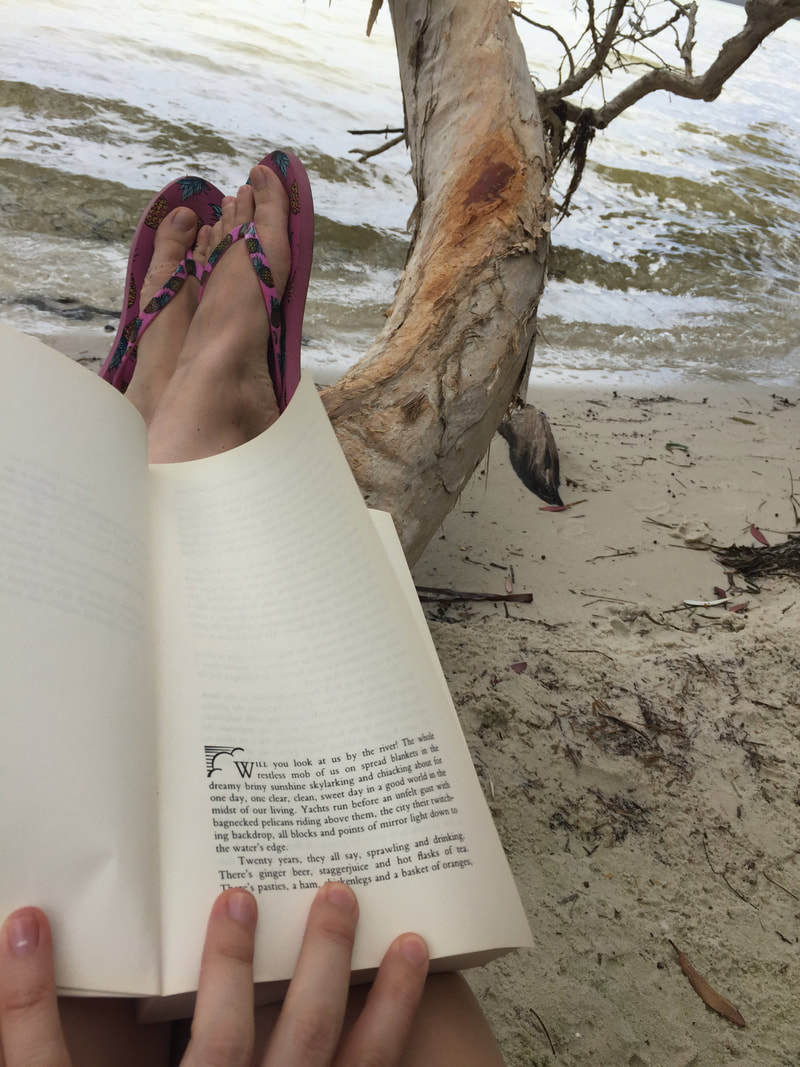
 RSS Feed
RSS Feed
